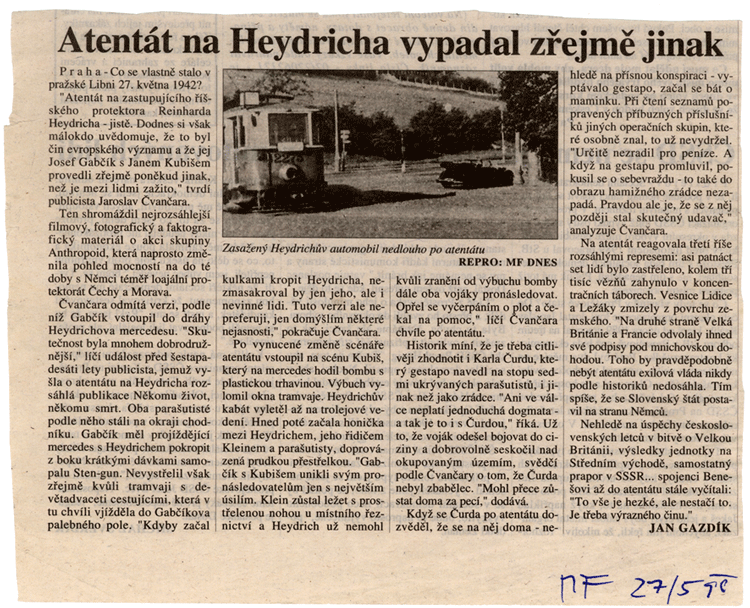4/11 2015, Den otevřených dvěří Ateliéru intermédií FaVU VUT Brno, 13:00–19:00, Údolní 19.
První ateliérová schůzka je ve středu 23/9 13:00, místnost 316 (Údolní). Prosíme o dochvilnost!
Novým vedoucím ateliéru bude od 1. září 2015 umělec Pavel Sterec.
Notes on the Fragments After the Assassination*
Video (on-line): http://intermedia.ffa.vutbr.cz/po-atentatu-3-fragmenty
Dialogue Summary & Jobsheet (PDF)
Notes on the Fragments After the Assassination*
(term exercise on the theme "the object in motion"; Brno Faculty of Fine Arts, 1998)
"fragment: a part, shard, piece; an unfinished work of art" (Czech monolingual dictionary)
There is no other way to film than shot by shot (subsequently joining them up). Every fact, every phenomenon is made up of many links which are connected to each other and have a mutual relationship or number of relationships. Understanding a particular event or situation depends on what parts and relationships the observer perceives, how intensively he perceives them and in what order.
The camera makes no distinction between important and unimportant, characteristic and uncharacteristic; it records reality in an egalitarian manner, not distinguishing the necessary from the random. This does not apply to the source material for my work – I begin where Messrs. Sequens (screenplay and direction), Milič (camera) and Chaloupek (editing) left off. I have taken five shots after the assassination and examined them.** I have not classically reedited them; I move continuously (in time and position) across the source by means of an excision, changing the content of the images (meaning and effect) as well as the relationship between them (the "thread", logical form).***
A dramatic analysis and synthesis performed by cinematic means has certain laws of its own, which derive to a considerable degree from convention; from how a viewer is accustomed to receive a cinematic work based on many years of experience. Of course, we can alter the laws given by convention, even change them completely. In such a case, what I do will affect even those laws proceeding from factors lying outside the film, from logic. I do not insist that the rules governing the linking of shots be observed, i.e. that the meaning be clear (a story will always have some kind of meaning). It is not my aim to remove everything inessential from the image, and so focus the viewer's attention on the main motive. I do not rule out ambiguity, misinterpretation, the prioritization of more secondary elements of information, interference; I do not leave supplementary motives on the secondary plane. The result is three fragments of the same section of the film (recognizable from the soundtrack).
The possibilities are many. In a digitized version of the film, where each pixel of the image compels an intervention (effect), I now purposely say: restez! The position "I repeat it as I saw it" (relata refero) is precise, and suits my purposes (finding something old that wasn't here before); this may just as well be described as happenstance (found along the way).
* The Assassination (Atentát), a film, Czechoslovakia, 1964, dir. Jiří Sequens
** technical: digitized portion (2 min.) of the film, PC, Adobe After Effects 5
*** see the chapters "The Blow-Up as a Creative Process" in textbooks on photography
